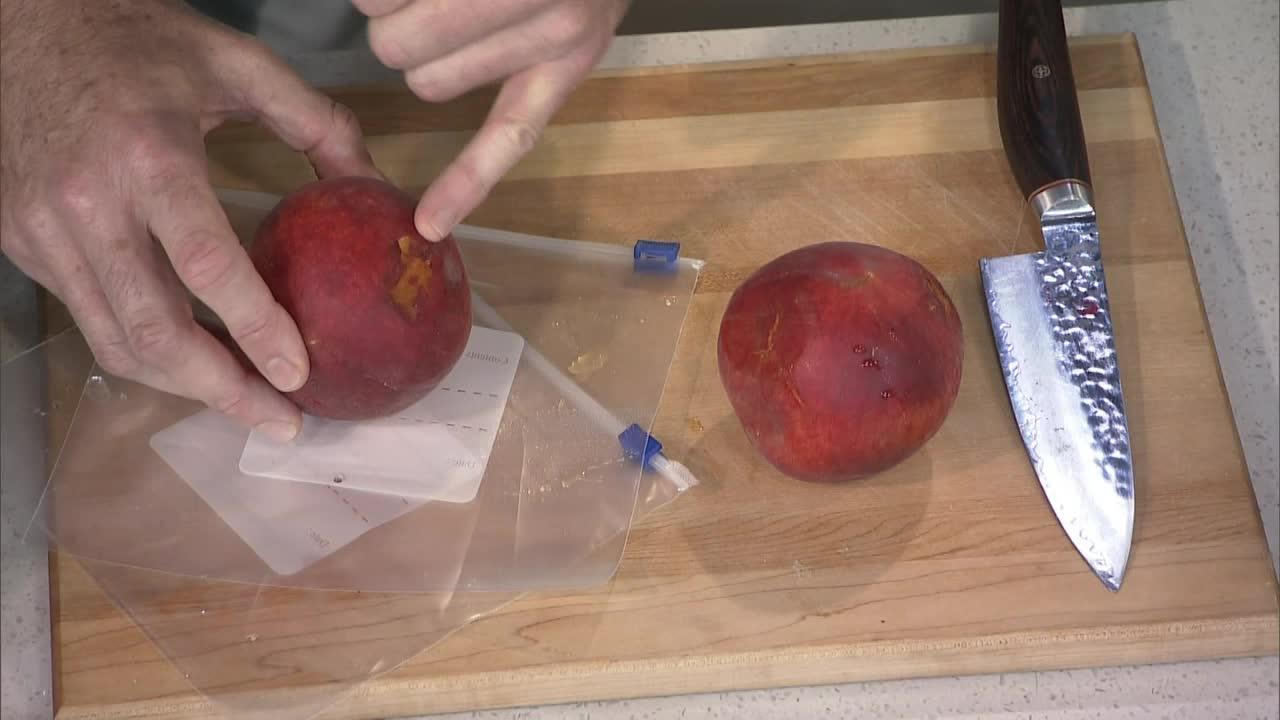There’s no denying that ripe summer fruit and little jars make a wonderful partnership allowing you to enjoy and extend the life of your favourite produce. After you decide which you’d rather make, dig into the eight key tips for the perfect jar of jam (or jelly):
What’s the difference between jam and jelly?
Jam
Contains pieces of partially broken-down fruit cooked with sugar. Meant to taste very fresh, they should be cooked just long enough for the fruit to begin to break down and release flavour. Overcooked jams will have a stewed flavour — not what you want.
Jelly
Made by extracting fruit juice and cooking it with sugar and an acid, with pectin used to set it. Notably sweeter than jams jellies get the best flavour when you cook the fruit at a low heat, for a very long time. Skipping this step will result in a flat-tasting jelly. To add depth, cook the fruit with the skin, seeds and even core. Jellies are always sieved and strained so solids will be removed later in the process.
8 things to remember
1. Select in-season fruit that is perfectly ripe.
Ripe fruit has the best flavour and the highest level of pectin. Preserving is intended to lock in the flavours of summer — so take advantage of them while they’re at their peak.
2. Clean the fruit properly.
Although jams and jellies are cooked, anything that you put in the jar will stay in the jar. Ensure you wash fruit before cooking it and scrub any citrus peel properly, too.
3. Cook fruit in stainless steel or copper pots only.
Other metals can react with the acid in the fruit and leave a lingering metallic taste.
4. Blanch fruits that are overly sour or bitter.
Sometimes sugar alone is not enough to balance the sour to sweet ratio. Blanching fruit before the cooking process will leach out some of the bitterness.
5. Combat overly sweet fruits by adding a second fruit.
Although lemon juice is often recommended to balance sweetness, it doesn’t always do the trick. Try adding in a less sweet fruit — think strawberry-rhubarb.
6. Have paper towel on hand.
Despite how clean your kitchen is, dishtowels are sponges for germs and bacteria. Always use a funnel to pour your mixture into the jar. (And wipe up any spills on jar rims with a clean paper towel.)
7. Leave adequate head space for proper sealing.
Improper head space is one of the main reasons preserves are not properly sealed, so be sure to leave between 1/4- to 1/2-in. of space, depending on the recipe. If the lids haven’t “popped,” it’s not safe to store them unrefrigerated. However, they can be enjoyed for two to three weeks if stored in the refrigerator.
8. Have the right canning tools on hand
Although canning is intrinsically satisfying — having a few key tools will make the process much easier, and safer! Always have these five:
- A wide-mouth funnel allows the preserve can be poured into jars cleanly — ensuring a proper seal.
- Canning tongs are important to have on hand; they’re long, with rubber-coated grips that make grasping jars in hot water slip-free.
- Canning racks are also a must, allowing you to submerge and remove your jars from boiling water in a safe manner.
- Jelly bags are a great alternative to making your own with cheesecloth — much easier to pour the cooked fruit into and also to hang.
- Over-sized liquid measuring cups with a pourable spout — they are handy in every way.


